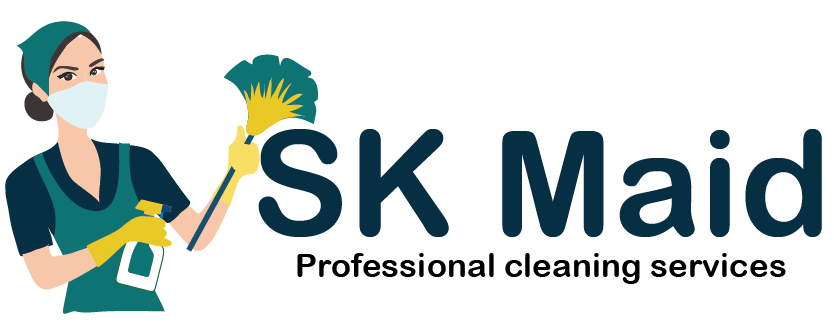The shift towards eco-friendly cleaning products has gained significant momentum in recent years as individuals and households increasingly prioritize sustainability in their daily routines. Unlike conventional cleaning agents that often contain harsh chemicals detrimental to human health and the environment, eco-friendly alternatives offer a safer and more sustainable approach to cleanliness. This article explores the importance of eco-friendly cleaning products, their benefits over conventional options, and practical tips for integrating them into a greener cleaning routine.
Understanding the Importance of Eco-Friendly Cleaning Products
In today’s world, where environmental sustainability is increasingly crucial, the choice of cleaning products can significantly impact. Conventional cleaning products often contain harsh chemicals such as ammonia, chlorine, and phosphates. These chemicals can be harmful to both human health and the environment. When these products are used and disposed of, they can contribute to water and air pollution, affect wildlife and aquatic life, and even pose risks to our well-being through indoor air pollution.
The Negative Impact of Conventional Cleaning Products
- Health Concerns: Many conventional cleaners emit volatile organic compounds (VOCs) and other chemicals linked to respiratory problems, allergies, and skin irritations. Prolonged exposure can lead to more severe health issues.
- Environmental Damage: Chemicals like phosphates and chlorine can persist in water systems, contributing to nutrient imbalances in aquatic ecosystems and harming marine life. Additionally, the production and disposal of these chemicals contribute to greenhouse gas emissions and waste generation.
Benefits of Using Eco-Friendly Alternatives
On the other hand, eco-friendly cleaning products offer a safer and more sustainable solution:
- Safer Indoor Environment: Eco-friendly products are typically made from natural, biodegradable ingredients that are gentler on surfaces and indoor air quality. They reduce the risk of allergic reactions and respiratory problems, making them suitable for households with children and pets.
- Reduced Environmental Footprint: These products are designed to break down safely in the environment without leaving harmful residues or contributing to long-term pollution. They often come in recyclable or biodegradable packaging, further reducing waste.
- Support for Sustainable Practices: By choosing eco-friendly cleaning products, consumers support companies committed to sustainable practices and ethical sourcing of ingredients. This encourages a shift towards cleaner production methods and reduces the overall environmental impact of cleaning routines.
Exploring Sustainable Cleaning Techniques
Sustainable cleaning techniques go hand-in-hand with eco-friendly cleaning products to minimize environmental impact while maintaining cleanliness and hygiene. These techniques emphasize using fewer resources and reducing waste throughout the cleaning process.
Essential Sustainable Cleaning Techniques:
- Microfiber Cloths and Mops: Microfiber cloths and mops are effective alternatives to disposable wipes and paper towels. They are reusable, durable, and can be washed multiple times, significantly reducing waste.
- Water Conservation: Use water-efficient methods such as spraying rather than soaking surfaces and using controlled amounts of water for cleaning tasks.
- Energy-Efficient Appliances: Opt for energy-efficient cleaning appliances like vacuum and steam cleaners. They consume less energy while effectively removing dirt and grime.
- Natural Cleaning Agents: Incorporate natural ingredients like vinegar, baking soda, and lemon juice into your cleaning routine. These substances are effective for removing stains and odors without the harmful effects of synthetic chemicals.
- Reducing Plastic Waste: Choose cleaning products in refillable or recyclable packaging to minimize plastic waste.
- Proper Disposal of Cleaning Waste: Dispose of cleaning waste responsibly by recycling containers and properly disposing of hazardous materials according to local regulations.
Benefits of Sustainable Cleaning Techniques:
- Environmental Conservation: By reducing water and energy consumption and minimizing waste generation, sustainable cleaning techniques contribute to environmental conservation efforts.
- Cost Savings: Many sustainable cleaning methods and products are cost-effective in the long run due to reduced consumption of disposable items and lower utility bills.
- Healthier Indoor Environments: Using fewer harsh chemicals and more natural cleaning agents promotes better indoor air quality and reduces exposure to harmful toxins.
Different Types of Eco-Friendly Cleaning Products
Switching to eco-friendly cleaning products doesn’t mean sacrificing effectiveness. There are a variety of eco-friendly alternatives available across different cleaning categories, catering to various household needs and surfaces:
All-Purpose Cleaners
All-purpose cleaners are versatile products that clean various surfaces, from kitchen countertops to bathroom sinks. They are typically formulated with natural ingredients like plant-based surfactants and essential oils, offering adequate cleaning power without harsh chemicals.
Dishwashing Detergents
Eco-friendly dishwashing detergents are gentle on dishes yet harsh on grease and food residue. They are often phosphate-free and formulated with biodegradable ingredients that break down safely in water systems, minimizing environmental impact.
Laundry Detergents
Eco-friendly laundry detergents are formulated to clean clothes effectively while being gentle on fabrics and the environment. They are free from synthetic fragrances, dyes, and optical brighteners, making them suitable for sensitive skin and reducing the release of harmful chemicals into waterways.
Bathroom Cleaners
Bathroom cleaners tackle soap scum, mold, and mildew without harsh chemicals like bleach or ammonia. They often contain natural disinfectants such as tea tree oil or citric acid, providing a safe and effective way to maintain bathroom cleanliness.
Floor Cleaners
Eco-friendly floor cleaners are designed for various flooring types, including hardwood, tile, and laminate. They are formulated with plant-based ingredients that lift dirt and grime while leaving floors streak-free and without residue.
Window and Glass Cleaners
Window and glass cleaners provide streak-free shine using natural ingredients like vinegar or plant-derived alcohol. They effectively remove fingerprints, dust, and smudges without ammonia or other harmful solvents.
Key Features to Look for in Eco-Friendly Cleaning Products
When choosing eco-friendly cleaning products, several key features indicate their sustainability and safety for both your home and the environment:
Biodegradability
Eco-friendly cleaning products should be biodegradable, meaning they can naturally break down into harmless compounds over time. This reduces their impact on water systems and ecosystems, minimizing pollution and supporting sustainable waste management practices.
Non-Toxicity
Opt for cleaning products that are non-toxic and free from harmful chemicals such as ammonia, chlorine, and phosphates. Non-toxic formulations are safer for indoor air quality and reduce health risks associated with exposure to synthetic chemicals, making them ideal for households with children, pets, and individuals with allergies or sensitivities.
Cruelty-Free and Vegan Options
Look for cleaning products that are certified cruelty-free and vegan. These products are not tested on animals and do not contain animal-derived ingredients, aligning with ethical standards that promote compassion towards animals and environmental sustainability.
Packaging Considerations
Consider the packaging of eco-friendly cleaning products to minimize environmental impact:
- Recyclable Materials: Opt for products packaged in recyclable materials such as glass or PET plastic, which can be easily recycled after use.
- Refillable Options: Some brands offer refillable containers, reducing plastic waste by allowing you to reuse the same bottle multiple times.
- Minimal Packaging: Choose products with minimal packaging or packaging made from recycled materials to further reduce waste generation.
Tips for Creating a Greener Cleaning Routine
Creating a greener cleaning routine involves adopting practices that reduce environmental impact while maintaining a clean and healthy home environment. Here are some practical tips to help you get started:
- Choose Eco-Friendly Products: Opt for cleaning products labelled as eco-friendly, biodegradable, and free from harsh chemicals. Look for certifications such as EPA Safer Choice, USDA Organic, or third-party eco-labels that verify their environmental claims.
- Make Your Cleaners: Consider DIY cleaning solutions using simple ingredients like vinegar, baking soda, and essential oils. These natural alternatives are effective for cleaning various surfaces and are safer for your health and the environment.
- Use Energy-Efficient Appliances: When possible, use energy-efficient appliances such as vacuum and steam cleaners that consume less electricity and water. This reduces your household’s carbon footprint while maintaining cleanliness.
- Conserve Water: Practice water-saving techniques during cleaning tasks, such as turning off the tap when not in use, using a bucket instead of running water for mopping, and fixing any leaks promptly to minimize water waste.
- Reduce, Reuse, Recycle: Minimize waste by choosing cleaning products with minimal or recyclable packaging. Consider purchasing concentrated formulas or products with refill options to reduce plastic consumption and packaging waste.
- Switch to Microfiber Cloths: Replace disposable paper towels with reusable microfiber cloths for cleaning surfaces. Microfiber cloths are more durable, effective at trapping dust and dirt, and can be washed and reused multiple times.
- Ventilate Your Home: Improve indoor air quality by opening windows and doors during and after cleaning to ventilate your home and reduce the buildup of indoor air pollutants from cleaning chemicals.
- Schedule Regular Maintenance: Keep appliances and cleaning tools well-maintained to prolong their lifespan and ensure optimal performance. Regular maintenance reduces the need for replacements, saving resources and reducing waste.
- Educate and Involve Your Household: Encourage family members or roommates to participate in green cleaning practices by effectively explaining the benefits of using eco-friendly products.
- Dispose of Hazardous Waste Properly: Dispose of used cleaning products and hazardous materials according to local regulations to prevent environmental contamination. Consider recycling containers and packaging whenever possible.
Final Thoughts
Switching to eco-friendly cleaning products is not just a trend but a proactive step towards preserving our planet for future generations. By choosing biodegradable, non-toxic, and cruelty-free products, we minimize our environmental impact while creating a safer, healthier home environment. Adopting greener cleaning routines, such as using energy-efficient appliances, conserving water, and reducing waste, further enhances our efforts towards sustainability. Every small change in our cleaning habits contributes to a more considerable collective impact on environmental conservation. Let’s continue prioritizing eco-friendly choices, supporting sustainable practices, and inspiring others to join us in making a positive difference. Together, we can create cleaner homes and a greener planet for all.

